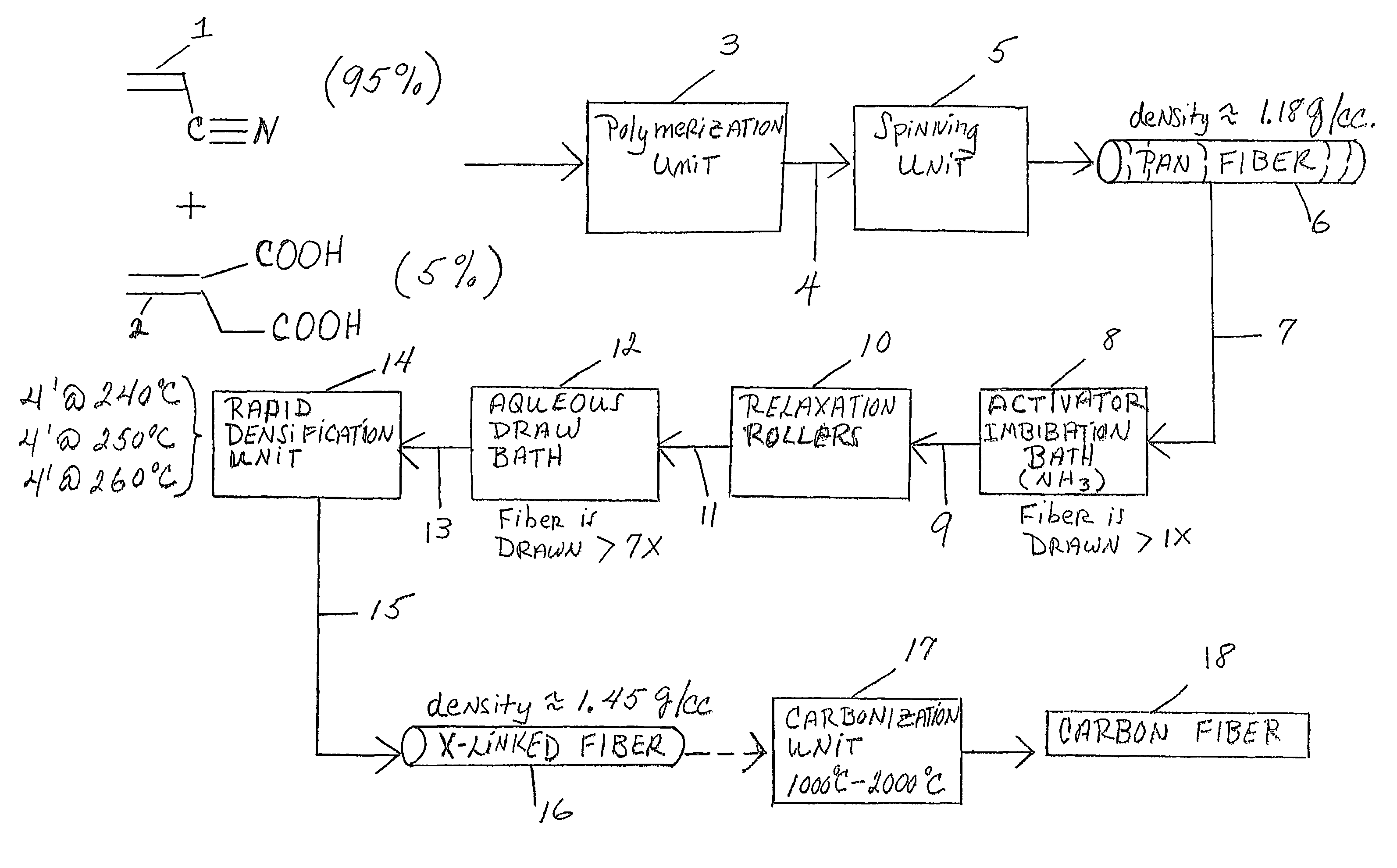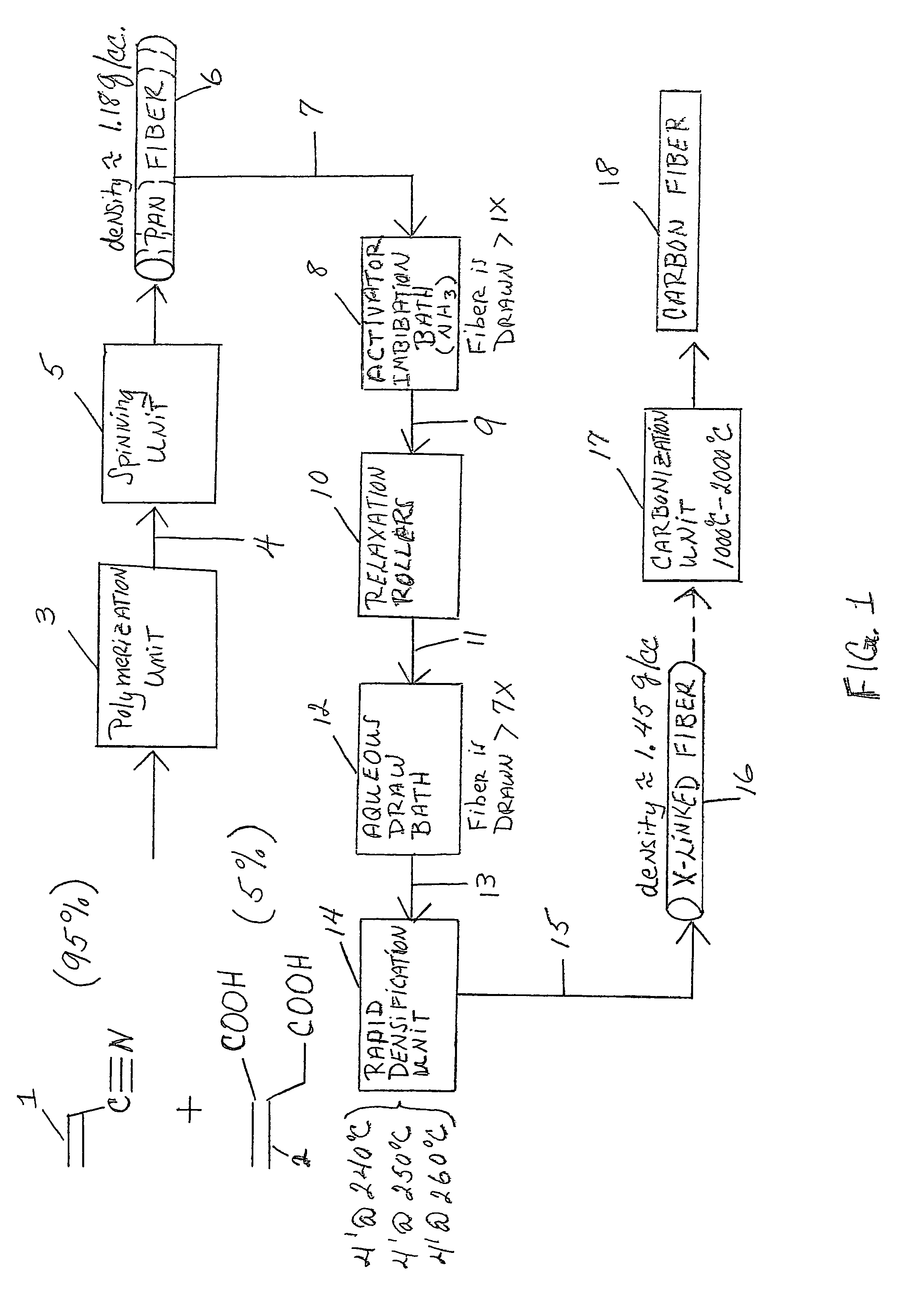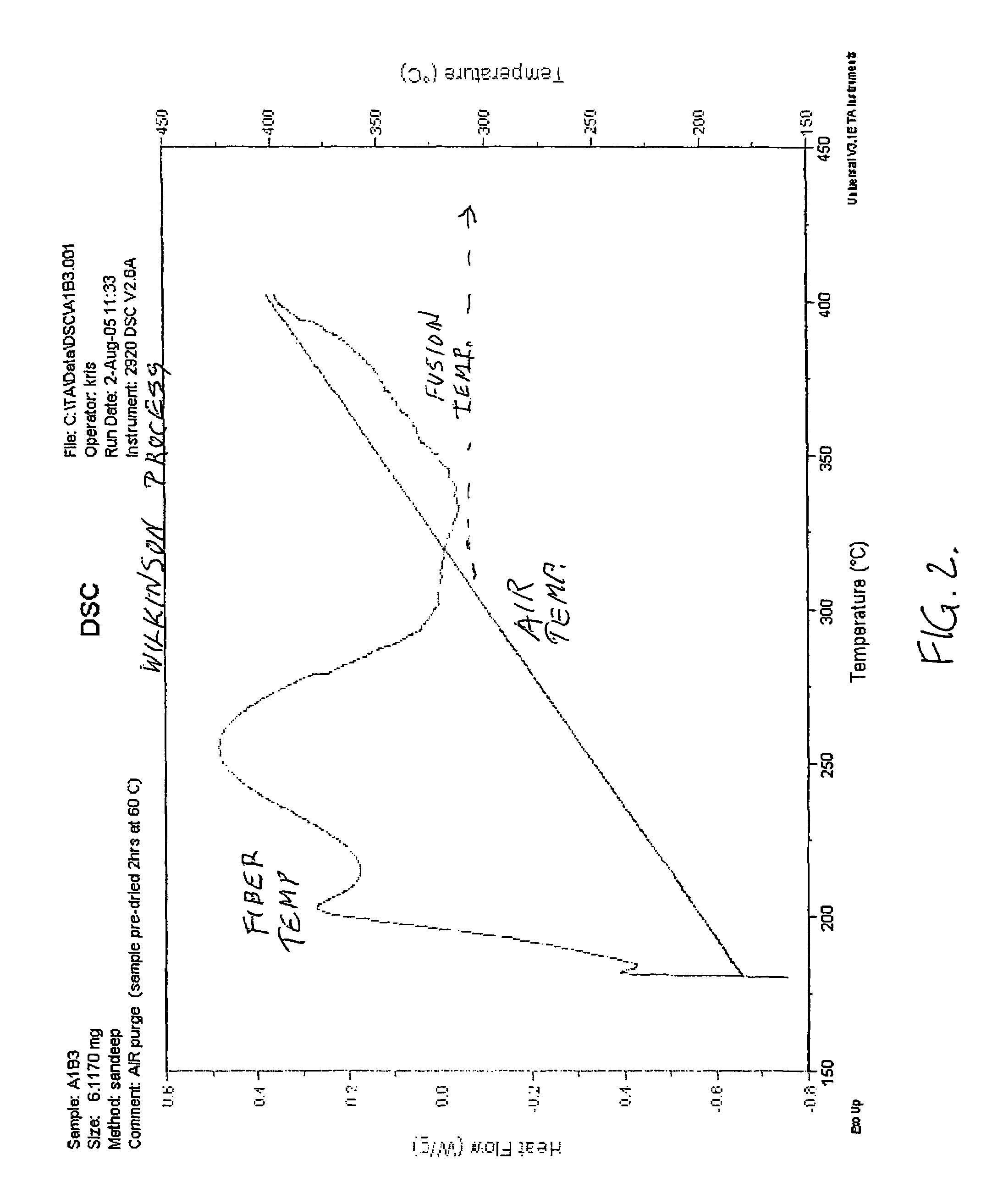Process for preparing superior carbon fiber
a carbon fiber and process technology, applied in stretch-spinning methods, textiles and papermaking, chemical after-treatment of artificial filaments, etc., can solve the problems of high net profit of a company, achieve high quality carbon fiber, improve the efficiency and economics of carbon fiber production, and achieve rapid densification
- Summary
- Abstract
- Description
- Claims
- Application Information
AI Technical Summary
Benefits of technology
Problems solved by technology
Method used
Image
Examples
example
[0056]Into a round bottom 1000 ml flask, equipped with a magnetic stirrer, is added 500 ml distilled water. Then acrylonitrile in an amount of 1,235 g (23.3 moles) is added to the water. Itaconic acid in an amount of 65 g (0.5 moles) is then added to the water solvent. A catalytic amount of ammonium persulfate and potassium bisulfite is then added to the aqueous solvent. A micro-amount of catalytic iron (about 10 ppm) is also added to the aqueous solvent.
[0057]The aqueous mixture of acrylonitrile, itaconic acid, ammonium bisulfite, potassium persulfate, and iron is stirred for about 15 minutes. The stirred solution is then removed to an aluminum shell reactor, the reactor surrounded by a water-jacket shell. The reactor is heated to about 80° C. for a time of about 30 minutes. A copolymer of acrylonitrile and itaconic acid is formed as by a precipitation polymerization. Heat of reaction is controlled by the water jacket shell.
[0058]After the precipitation polymerization reaction is c...
PUM
| Property | Measurement | Unit |
|---|---|---|
| temperature | aaaaa | aaaaa |
| temperature | aaaaa | aaaaa |
| density | aaaaa | aaaaa |
Abstract
Description
Claims
Application Information
 Login to View More
Login to View More - R&D
- Intellectual Property
- Life Sciences
- Materials
- Tech Scout
- Unparalleled Data Quality
- Higher Quality Content
- 60% Fewer Hallucinations
Browse by: Latest US Patents, China's latest patents, Technical Efficacy Thesaurus, Application Domain, Technology Topic, Popular Technical Reports.
© 2025 PatSnap. All rights reserved.Legal|Privacy policy|Modern Slavery Act Transparency Statement|Sitemap|About US| Contact US: help@patsnap.com



